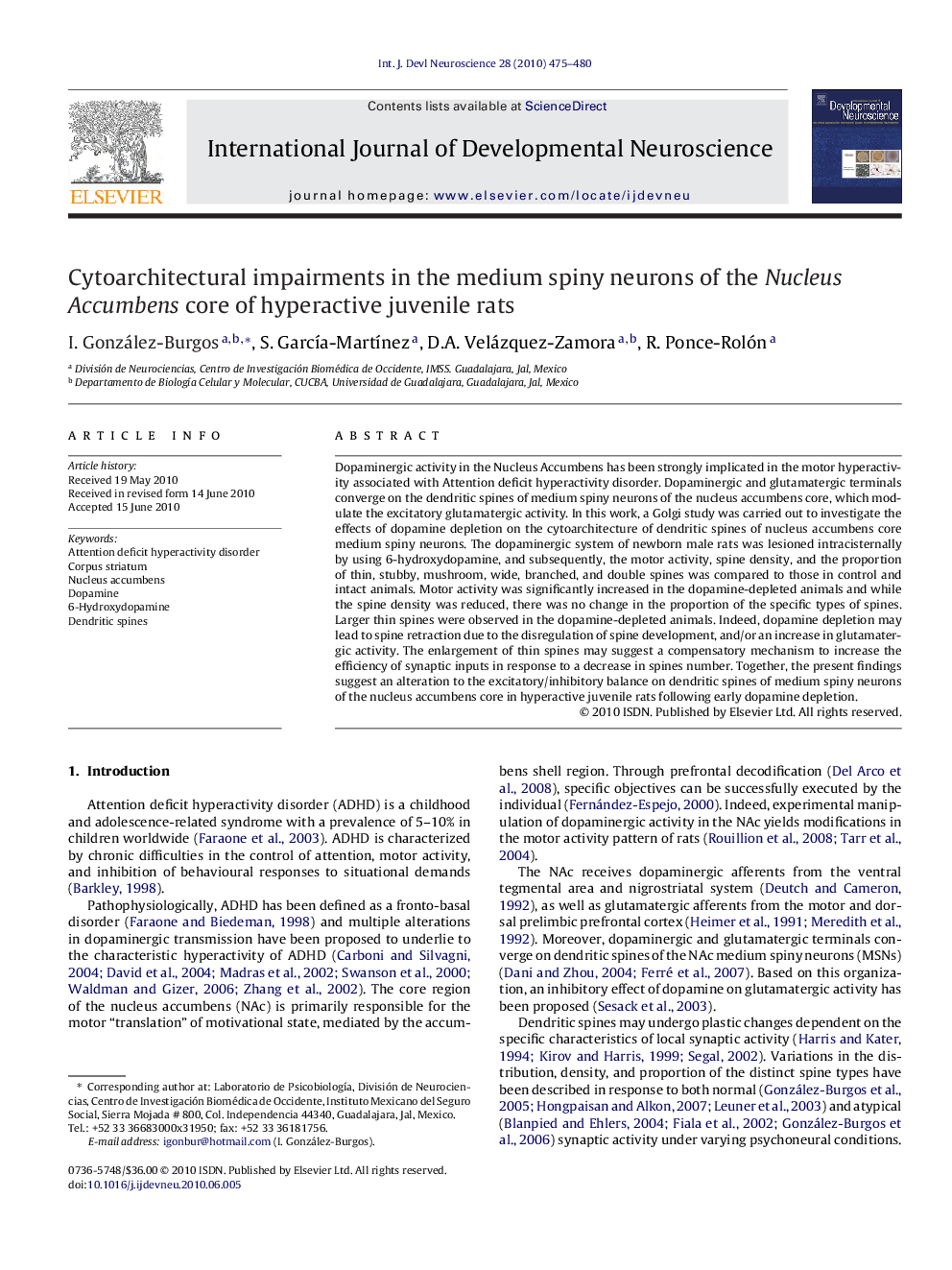| Article ID | Journal | Published Year | Pages | File Type |
|---|---|---|---|---|
| 2786603 | International Journal of Developmental Neuroscience | 2010 | 6 Pages |
Dopaminergic activity in the Nucleus Accumbens has been strongly implicated in the motor hyperactivity associated with Attention deficit hyperactivity disorder. Dopaminergic and glutamatergic terminals converge on the dendritic spines of medium spiny neurons of the nucleus accumbens core, which modulate the excitatory glutamatergic activity. In this work, a Golgi study was carried out to investigate the effects of dopamine depletion on the cytoarchitecture of dendritic spines of nucleus accumbens core medium spiny neurons. The dopaminergic system of newborn male rats was lesioned intracisternally by using 6-hydroxydopamine, and subsequently, the motor activity, spine density, and the proportion of thin, stubby, mushroom, wide, branched, and double spines was compared to those in control and intact animals. Motor activity was significantly increased in the dopamine-depleted animals and while the spine density was reduced, there was no change in the proportion of the specific types of spines. Larger thin spines were observed in the dopamine-depleted animals. Indeed, dopamine depletion may lead to spine retraction due to the disregulation of spine development, and/or an increase in glutamatergic activity. The enlargement of thin spines may suggest a compensatory mechanism to increase the efficiency of synaptic inputs in response to a decrease in spines number. Together, the present findings suggest an alteration to the excitatory/inhibitory balance on dendritic spines of medium spiny neurons of the nucleus accumbens core in hyperactive juvenile rats following early dopamine depletion.
Research highlightsThe dopaminergic system of newborn male rats was lesioned intracisternally by using 6-hydroxydopamine, and subsequently, the motor activity, spine density, and the proportion of thin, stubby, mushroom, wide, branched, and double spines was compared to those in control and intact animals. Motor activity was significantly increased in the dopamine-depleted animals and while the spine density was reduced, there was no change in the proportion of the specific types of spines. Larger thin spines were observed in the dopamine-depleted animals. Indeed, dopamine depletion may lead to spine retraction due to the disregulation of spine development, and/or an increase in glutamatergic activity. The enlargement of thin spines may suggest a compensatory mechanism to increase the efficiency of synaptic inputs in response to a decrease in spines number. Together, the present findings suggest an alteration to the excitatory/inhibitory balance on dendritic spines of medium spiny neurons of the nucleus accumbens core in hyperactive juvenile rats following early dopamine depletion.
